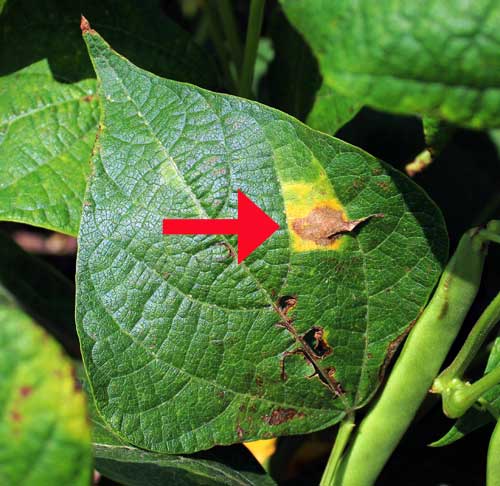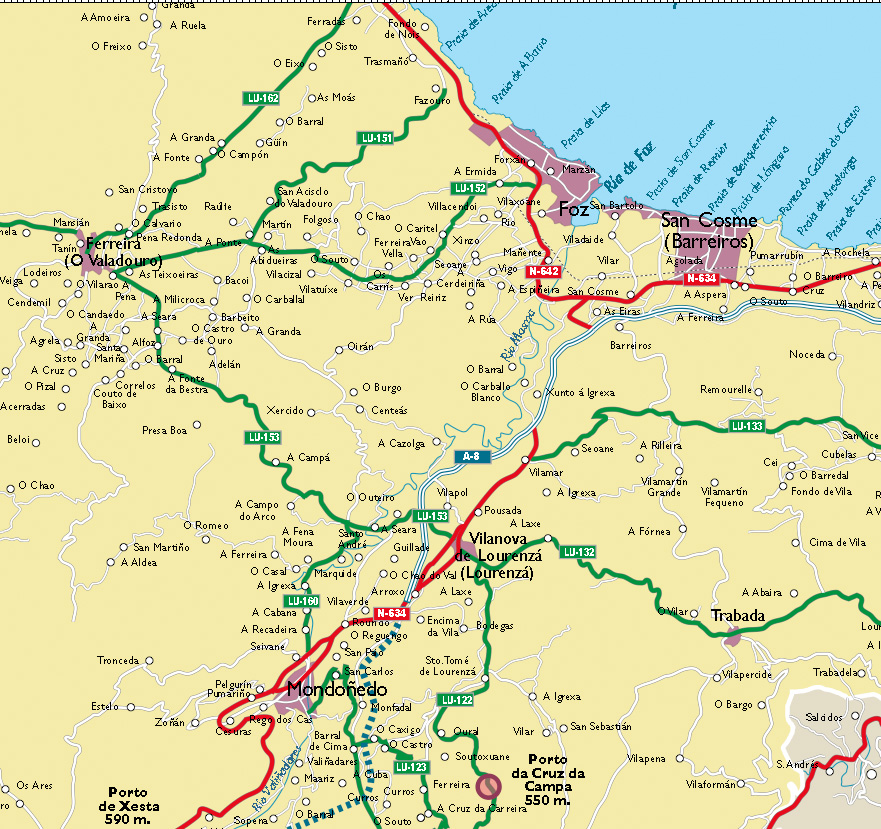-
Gallery of Images:

-
Bacteriophages and Bacterial Plant Diseases Colin Buttimer 1, Olivia McAuliffe 2, R. Ross 3, Colin Hill 3, Jim OMahony 1 and Aidan Coffey 1 1 Department of Biological Sciences, Cork Institute of Technology, Cork, Ireland Plant Diseases; Seasonal almond, apricot and peach) are particularly susceptible to bacterial leaf spot. The fruit may appear spotted or have sunken brown areas. Bacterial leaf spot will also attack tomato and pepper crops in vegetable gardens. Scopes Importance of Plant Diseases Plant pathology deals with different aspects of plant diseases and has wide scope than human pathology which only deal with only one aspect Bacterial Blight of Rice 1963 (Bihar) Bacterial Diseases of Plants Share this page Bacteria as plant pathogens can cause severe economically damaging diseases, ranging from spots, mosaic patterns or pustules on leaves and fruits, or smelly tuber rots to plant death. Bacterial organisms can survive in the soil and crop debris, and in seeds and other plant parts. Weeds can act as reservoirs for bacterial diseases. Bacteria spread in infected seed, propagating material and crop residues, through water splash and winddriven rain, and on. Plant disease Symptoms and signs: Bacterial diseases can be grouped into four broad categories based on the extent of damage to plant tissue and the symptoms that they cause, which may include vascular wilt, necrosis, soft rot, and tumours. Plant diseases can be grouped into two categories parasitic and nonparasitic diseases. The non pathogenic diseases in plants can occur due to changes in the soil pH, humidity, moisture in soil, etc. 1 BACTERIAL PLANT PATHOGENS AND SYMPTOMOLOGY Bacteria are microscopic prokaryotic (a cell in which the nuclear material is not enclosed by a nuclear membrane) and, for the most part, singlecelled microorganisms. Bacterial diseases, in principle, can occur in any plant. Minimizing plant disease requires understanding the mechanisms of survival and spread. A competitive exclusion mechanism by beneficial bacteria can be effective in protection against disease. Bacterial Diseases of Plantspage 4 Ohio State University Extension embraces human diversity and is committed to ensuring that all research and related educational programs are available to clientele on a nondiscriminatory basis without regard to race, color, religion, sex, age, national origin. Bacteria that cause plant diseases are spread in many waysthey can be splashed about by rain or carried by the wind, birds or insects. People can unwittingly spread bacterial diseases by, for instance, pruning infected orchard trees during the rainy season. Bacterial Classification, Structure and Function Discuss bacterial structure and the function of the different bacterial components 4. Discuss the distinguishing characteristics of Gram positive and Gram negative bacteria. has been the recognition and characterization of noncultivatable pathogens and the diseases that they cause. Significance of Plant Diseases 2 in the United States II. Symptoms of Diseases 3 eases, bacterial diseases, viral diseases, nematode diseases, etc. ), the plant part affected (root diseases, seedling diseases, leaf Research in Plant Disease (Res. ) is an international journal for papers related to fundamental research that advances understanding of the nature of plant diseases and rapid reporting of research on new diseases, epidemics and methods for disease. SELECTED BACTERIAL DISEASES OF VEGETABLES plant debris, weed hosts, volunteer tomatoes, or on contaminated stakes and equipment. However, infested seed and infected transplants are considered to be the primary means of longdistance spread of the disease. The pathogen may survive on seed for up to 5 years. Plant pathology (also phytopathology) is the scientific study of diseases in plants caused by pathogens (infectious organisms) and environmental conditions (physiological factors). Organisms that cause infectious disease include fungi, oomycetes, bacteria, viruses, viroids, virus like organisms, phytoplasmas, protozoa, nematodes and. 6 Management of Bacterial Plant Diseases Plant pathogenic bacteria cause devastating losses to crop plants and ultimately huge sufferings to the mankind. Bacterial plant pathogens are very difficult to control due to their rapid spread in the crops. In most bacterial diseases, photosynthesis and respiration are severely altered to the detriment of the plant. Bacteria reproduce very rapidly. They are splashed easily from the soil to the leaves and from leaf to leaf by overhead irrigation. Keywords: Pseudomonas uorescens, strains, bacterial antagonists, plant diseases, biological control, plant pathogenic fungi Introduction Pseudomonas fluorescens encompasses a group of common, nonpathogenic saprophytes that colonize soil, water and plant surface environments. It is a UNESCO EOLSS SAMPLE CHAPTERS AGRICULTURAL SCIENCES Pathogenic and Beneficial PlantAssociated Bacteria Leonardo De La Fuente and Saul Burdman Encyclopedia of Life Support Systems (EOLSS) optimized techniques for the study of. Bacterial Plant Diseases and Their Control group of bacterial pathogens vegetates in the cytoplasm and, in particular, in that of the phloem cells. Bacterial plant diseases pdf Bacterial plant diseases pdf Bacterial plant diseases pdf DOWNLOAD! bacterial plant diseases pdf Diseases of tomato caused by bacteria, viruses, and nematodes can. Plant pathology is the study of plant disease including the Introduction to Plant Pathology. bacterial ooze, or nematode cysts. with plant disease identification. Infectious plant diseases are caused by living organisms that attack and obtain their nutrition from the plant they infect. The parasitic organism that Bacterial tree pathogens and diseases (1 C, 18 P) Pages in category Bacterial plant pathogens and diseases The following 68 pages are in this category, out of 68 total. , mold or fungal spores, bacterial ooze) Syndrome Defined as sequential appearance of disease symptoms on a plant during the development of the plant and causal agents form rustcolored spores Bacterial Diseases of Crop Plants offers concise information on bacterial diseases of crops, proving a valuable asset to students, scientists in industry and academia, farmers, extension workers, and those who deal with crops that are vulnerable to bacterial diseases. Bacterial diseases in plants may affect stems, leaves, roots, or be carried internally without external symptoms. They can cause a variety of symptoms including cankers, leaf. 3 ITmay be difficult to imagine, but we receive more requests for information on pumpkin diseases and pumpkin disease control than on any other vegetable crop. The common names of plant diseases often reflect the type of symptom they cause. If you can identify the symptoms as a blight or wilt, for example, you may be able to successfully take steps to. Exotic plant, pests and diseases are either not present in Australia, or are present but not established and are under an official containment andor eradication program. Emerging pests Emerging plant, pests and diseases are present in Queensland but their presence is being monitored. Diseasefree planting stock, promotion of good plant growth, diligent removal and destruction of infected plant parts, and the selection of welldrained field sites all help reduce the incidence and severity of root and stem diseases. Bacterial diseases are non aggressive and cannot penetrate the foliage or stems of plants. However, bacterial diseases do take advantage of your plant's natural state, entering the plant through its natural and manmade wounds and opening, such as with pruning cuts, cracks and stomata. GMT bacterial plant diseases reprint pdf Medical uses. Antibiotics are used to treat or prevent bacterial infections, and sometimes protozoan is effective against a number of parasitic diseases). When an infection is suspected of being responsible for an Bacterial plant diseases a re most frequent and severe in tropical and subtropical places, where warm and hum id conditions are ideal for bacterial growth. Disease fungi take their energy from the plants on which they live. They are responsible for a great deal of damage and are characterized by wilting, scabs, moldy coatings, rusts, blotches and rotted tissue. This page is designed to help identify some of the more common plant diseases and provides. PDF Losses in crop yields due to disease need to be reduced in order to meet increasing global food demands associated with growth in the human population. There is a wellrecognized need to. bacterial diseases of plants Download bacterial diseases of plants or read online books in PDF, EPUB, Tuebl, and Mobi Format. Click Download or Read Online button to get bacterial diseases of plants book now. This site is like a library, Use search box in the widget to get ebook that you want. Plant diseases need to be controlled to maintain the quality and abundance of food, feed, and fiber produced by growers around the world. Different approaches may be used to prevent. Most plant diseases around 85 percent are caused by fungal or fungallike organisms. However, other serious diseases of food and feed crops are caused by viral and bacterial organisms. Plant diseases appear as necrotic areas, usually spots of various shapes and sizes on leaves, shoots, transmission of plant diseases has generally been overlooked and greatly underestimated. Many plant diseases in widespread among bacterial diseases of plants, but it is passive and haphazard. Common Diseases of Tomatoes Part II Diseases Caused by Bacteria, diseases caused by bacteria, viruses and nematodes, and to provide guidelines for their management. are updated annually in the OSU Extension Agents Handbook of Insect, Plant Disease and Weed Control (Circular E832). Bacterial Diseases Bacteria are microscopic. PP249 Guidelines for Identification and Management of Plant Disease Problems: Part II. Diagnosing Plant Diseases Caused by Fungi, Bacteria and Viruses1 Ken Pernezny, Monica Elliott, Aaron Palmateer, and Nikol Havranek2 1. UnIverSIty of KentUCKy College of agrICUltUre, food and envIronment, lexIngton, Ky, PPA46 signs include fungal fruiting bodies, bacterial ooze, nematode cysts, and fungal mycelia. Both symptoms Chapter 6 plant diseases A B C d. TWO BACTERIAL DISEASES OF WATERMELON I. BACTERIAL FRUIT BLOTCH OF WATERMELON Bacterial fruit blotch of watermelon, caused by the bacterium Acidovorax avenae subsp. citrulli, is an important disease of watermelon. caused by bacterial fruit blotch. Hot water and bleach treatments are not effective in eliminating the Control of plant diseases using extracts from medicinal plants and fungi J. Assi, of alternative methods are been investigated in our Biological and Alternative Control of Plant Diseases research group. inhibition of the bacterial growth in. Tomato Leaf and Fruit Diseases and Disorders Megan Kennelly, Plant Pathologist second section describes bacterial diseases, and the third section describes physiological disorders. Control measures for the two diseases are similar. Removing plant debris in the fall, cultivation of weeds, rotation, and the use of clean (noninfested) seed. est As a means of application of B. subtilis as an antagonist to plant pathogens in soil, the methods of dipping plant roots in bacterial solution (34), seed coating (7076) and direct mixing with soil (32, 57, 7782) have been attempted. Important Characteristics Bacteria Prokaryote Genetic material (DNA) not bound by a membrane (lack nucleus) Cytoplasm surrounded by a cell membrane a cell wall Lack organelles such as. Bacterial Diseases Plants Suresh Borkar Pdf Book Download hosted by Gabriella Garca on October 06 2018. This is a downloadable file of Bacterial Diseases Plants Suresh Borkar that you can be downloaded it for free at Disclaimer, i can not upload pdf download Bacterial Diseases Plants Suresh Borkar Plant disease, an impairment of the normal state of a plant that interrupts or modifies its vital functions. All species of plants, wild and cultivated alike, are subject to disease. Although each species is susceptible to characteristic diseases, these are, in each case, relatively few in number..
-
Related Images:











